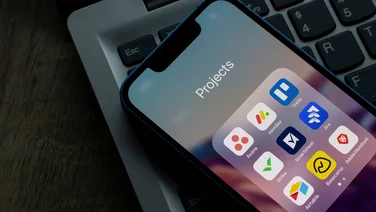To help us provide you with free impartial advice, we may earn a commission if you buy through links on our site. Learn more





PhotoDirector was first launched in June 2011 as a lower-cost rival to Adobe Lightroom. With three versions in less than a year, Cyberlink has clearly been busy. Thankfully this update is free for all existing users who paid full price.

The People Beautifier tools (used here on the right side only) can take years off you – just remember never to let anyone see your actual face ever again
Adobe has been busy too, though, launching Lightroom 4 and slashing its price in half. This puts the two packages in direct competition and puts enormous pressure on PhotoDirector, but this latest update shows it to be a feisty underdog.
The Edit tab is new and includes various tools that have more in common with Photoshop Elements than Lightroom. The People Beautifier section can whiten teeth, enhance eyes, smooth skin blemishes and eliminate wrinkles. The former three processes are applied as brush strokes, and are unusually effective in their subtlety and photo-realism. They’re non-destructive, too, so as with the tools in the Adjustment tab, they can be tweaked or removed later without having to wade through the undo history.
The Wrinkle Remover involves defining the offending area and manually grafting some smooth skin from elsewhere, with colours matched automatically and convincingly. Whether home users need to airbrush faces is highly dubious but there’s no questioning the technology. It’s a destructive process, though, so edits are permanent, including for any previously applied treatments. A Save As command avoids losing the original file, although it’s confusing that clicking Yes discards the edits.
The Edit tab is also home to four effects: Black & White, Sepia, Tint and Blur. Each one has a brush so that the effect can be selectively removed from parts of the image – perfect for creating black and white photos where one area is in colour, and also for simulating the narrow depth of field of a wide-aperture lens. However, the blur effect is a little ugly, turning each pixel into a square-shaped block. A circular blob to simulate the curved aperture blades of an expensive lens would give more attractive results. We’d also like to see a gradually increasing blur radius rather than a fade between blurred and sharp versions of the image.

Selective blur simulates depth-of-field effects but its execution could be more polished
The Object Removal tool is essentially the same as the Wrinkle Remover, and it works much better than Lightroom’s Spot Removal tool for removing large objects with complex shapes. Background Removal extracts a subject from its surroundings. Areas are defined with either a Lasso tool or something very similar to Photoshop Elements’ Quick Selection Tool. There’s also an Edge brush, which coped superbly with the complex outline of a fluffy llama. The extracted area is then saved as a PNG file, ready to drop into another image using the Photo Composer tool. The only snag is that PhotoDirector doesn’t support PNG files anywhere except in the Photo Composer, so we had to rummage around the hard disk to locate the saved file. The Photo Composer is destructive and exports JPEGs, but these too must be reimported into the library manually.

The Background Removal tool handles complex shapes brilliantly; its inclusion here might save the need for a separate layer-based editor
Lightroom can’t match the tools in the Edit tab but it does have other features absent from PhotoDirector, including an excellent mapping function, webpage generation and book design. Which set of tools is more useful is a matter of personal preference, but PhotoDirector’s extra features feel better suited to home use.
It’s in the common ground that Lightroom edges ahead. PhotoDirector coped reasonably well with our library of 39,000 photos, but it often stopped responding for a couple of seconds as we moved around the software, and there were a few crashes during our tests. Photos are ordered by date, can be browsed by containing folder or tags and grouped into albums. Smart Collections group photos according to file type, EXIF data (such as focal length or ISO speed), file name and rating, or any combination. It’s a sophisticated system, but we’d like a quicker way to filter by these criteria. Defining a Smart Collection just to see all the photos rated three or more stars in a particular folder is far too laborious.
The biggest difference is that PhotoDirector’s raw-processing tools aren’t up to Lightroom’s standards, despite their operational similarity. Lightroom delivered more sophisticated noise reduction and smoother highlight recovery, and it corrected for lens distortions and chromatic aberrations in raw files automatically – something PhotoDirector can’t do. PhotoDirector’s ability to apply corrective treatments to limited areas of the image is more versatile than Lightroom’s, with more ways to define the selection and a wider set of processes available, but it’s not enough to redress the balance.

Noise reduction for raw files is pretty good but it doesn’t preserve details as well as Lightroom
It’s for these reasons that we’re hesitant to recommend PhotoDirector. The creative tools in its Edit tab give it a genuine advantage and – with a couple of exceptions – integrate well into the workflow. However, its basic corrective edits aren’t up there with the competition yet, and seeing as you’ll be applying these edits to thousands of photos, it’s important to get them right from the start. Even so, if digital makeovers and photo montages are on the agenda and you don’t want to fork out for both Lightroom and Photoshop Elements, PhotoDirector is a worthy alternative.
| Details | |
|---|---|
| Price | £90 |
| Details | www.cyberlink.com |
| Rating | *** |





